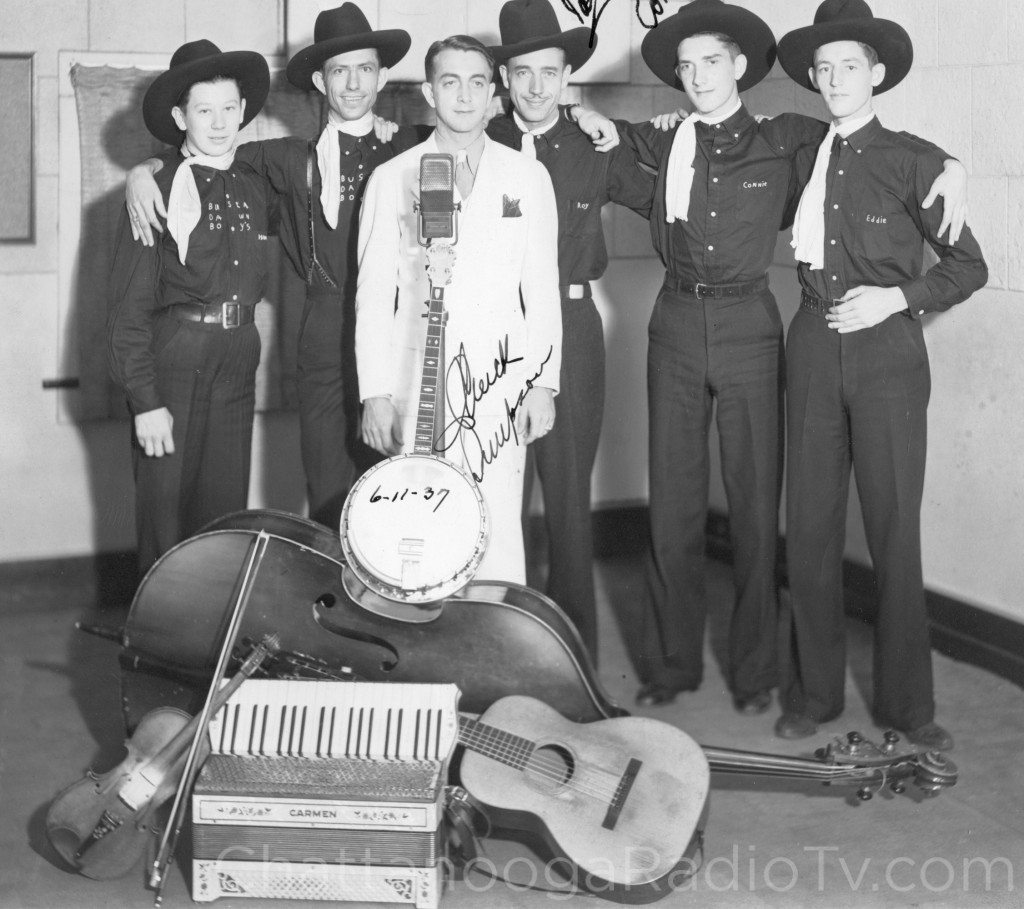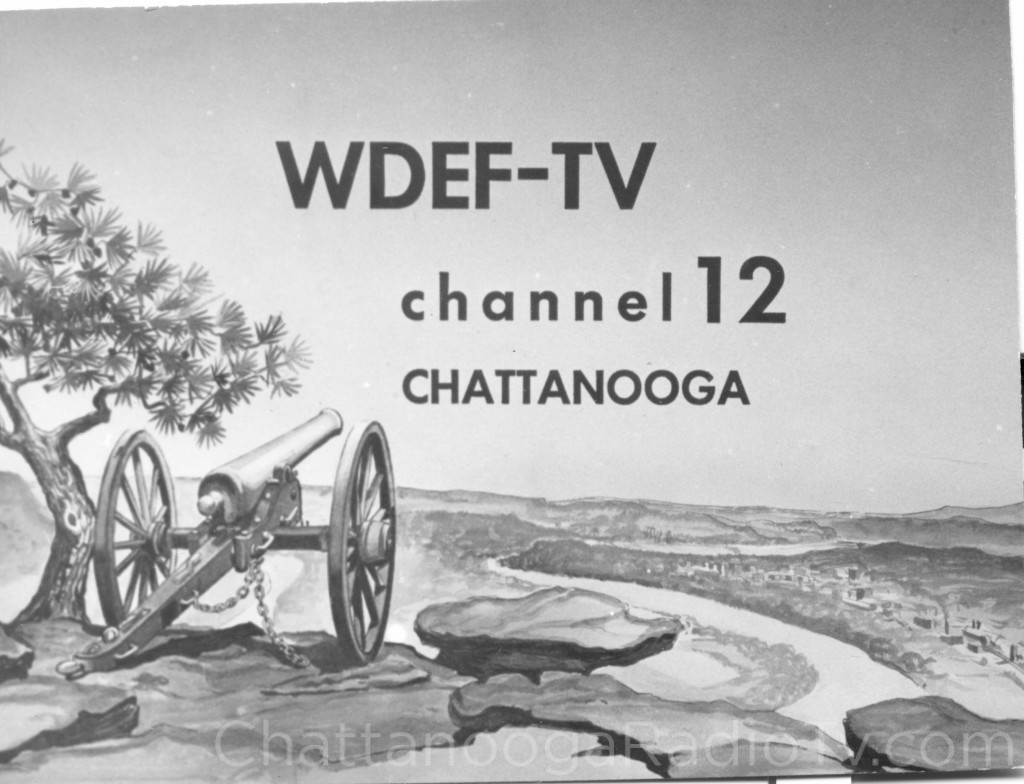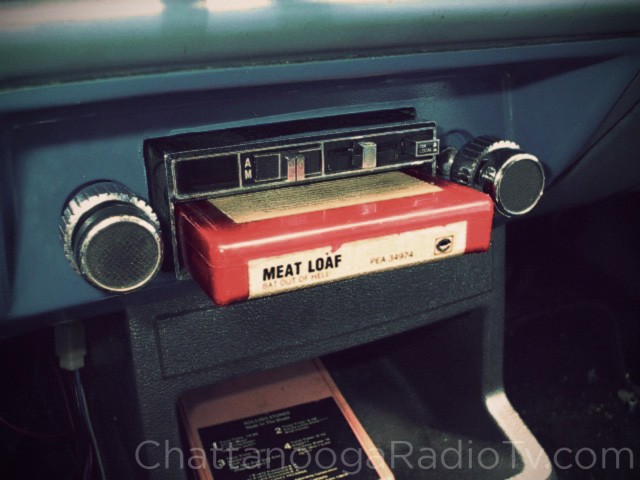On April 13, 1925, Chattanooga started broadcasting and has never stopped. WDOD-AM became the city’s first radio station. At first, it was on just three nights a week, for 90 minutes a night. In the 1930s, programming was expanded: they hired musical entertainers, plus a morning host.
Chuck Simpson hosted “Breakfast in Dixie,” with a cheerful style that would influence a teenager named Luther Masingill. (That young fellow went on to do his own show for a world-record 74 years on another station, WDEF.)
By the 1940s, there were three radio stations in town, all of them affiliated with major radio networks. Listeners heard live reports from the front lines of World War II, providing an immediacy that newspapers could not deliver. No doubt, folks were impressed by this major technological advance.
Then came the 1950s. WDEF Channel 12 became the area’s first TV station, which was great for merchants who were trying to sell televisions. Customers had been struggling to receive the snowy signals from Atlanta and Nashville.
Channel 12 was the only game in town until Channel 3 came along two years later.. When Channel 9 signed on in 1958, local viewers celebrated a choice of three channels, in glorious black-and-white! How could it possibly get any better than that?
In the 1960s, AM radio still ruled the roost. That decade also brought us “living color,” and if you were the first person on your street to have a color TV, you had plenty of visitors enjoying “Bonanza.” It was also the decade when TV news became more than just a guy reading at a desk. By then, news teams were filming their stories, and could usually get the film developed and on the air the very same day!
In the 1970s, Chattanooga had more radio stations than ever, and FM (“no static at all”) was emerging as the preferred choice. But radio was now facing a new form of competition: 8-track tapes.
Now, we could listen to the songs we liked, without being dictated by a radio station. By the end of the decade, the music tapes got even smaller, as cassettes became popular. Wow, twelve songs inside a little rectangular case. It would never get any better (or more compact) than that, right?
As the 1980s began, some of us had cable, or satellite TV, and we were able to watch thirty channels! We had one for music, one for sports, and we could even buy jewelry on a shopping channel. One of them, CNN put the news on 24 hours a day. “How could they possibly fill all that time?” we wondered. Local TV stations started doing live remote broadcasts with microwave trucks, as long as the antenna wasn’t blocked by a mountain, a building, a tree, or a leaf. As for music, we had compact discs now. No more tapes to rewind, or break. Those flat little CD’s would hold more than an hour of music, and we were convinced that it would never get better than that.
The 1990s brought us satellite trucks, so now newscasters could bounce their signal toward the heavens, and broadcast from just about anywhere. In addition to our local channels, we had about a hundred more, although we only watched a handful of them. This was the decade that dial-up internet moved into our living rooms, along with a big fat monitor, a tall computer tower, and a noisy printer. Eventually, local news outlets would set up on the worldwide web, and we were getting our news from way more than the three or four sources our parents did. Plus some of us started carrying a wireless mobile phone, which was about the size and weight of a brick.
By the 2000s, those cell phones finally started to get smaller, and some of them even doubled as a camera! Many of us now had high-speed internet, and those old-timey CD’s had been replaced by iPods, which put thousands of songs in our pockets, directly connected to our ears. We hung out together on Facebook, at least when we weren’t texting or Tweeting.
In 2015 the TV screens in our home are bigger than ever. Still, we strain to watch videos, read the news, and even enjoy a book on our tiny mobile screens, at least until the battery dies. Recharging our batteries now ranks right up there with food, drink, and sleep as a personal priority, especially when traveling. Oh, and by the way, TV reporters now use those little phones instead of those big trucks to transmit live news segments. No kidding.
Technology, and our ways of communicating sure have changed since that little AM radio station signed on ninety years ago. Unlike the old days when people couldn’t reach us when we were out of phone range, they can now call us any time. They make our phones ring wherever we are: on vacation, in the store, or even at church. Hmmm. Now that I think about it, maybe the old days weren’t so bad after all.







I LOVE LUTHER MASINGILL,TOMMY JETT AND YOU DAVID CARROLL!
I always wanted to work at WDOD, but wasn’t good enough.
Great story on radio in Chattanooga. No I was not here in 1925, that rumor is highly exaggerated. But I was here when all those TV stations came on the air. In fact I was sophomore at CHS when WDEF-TV came on the air in 1954. I remember when CH 9, through ABC, was the first station with color. Of course there weren’t many sets that could receive it in color.
Jerry, too bad that little radio station, born in 1925 was euthanized in 2012.